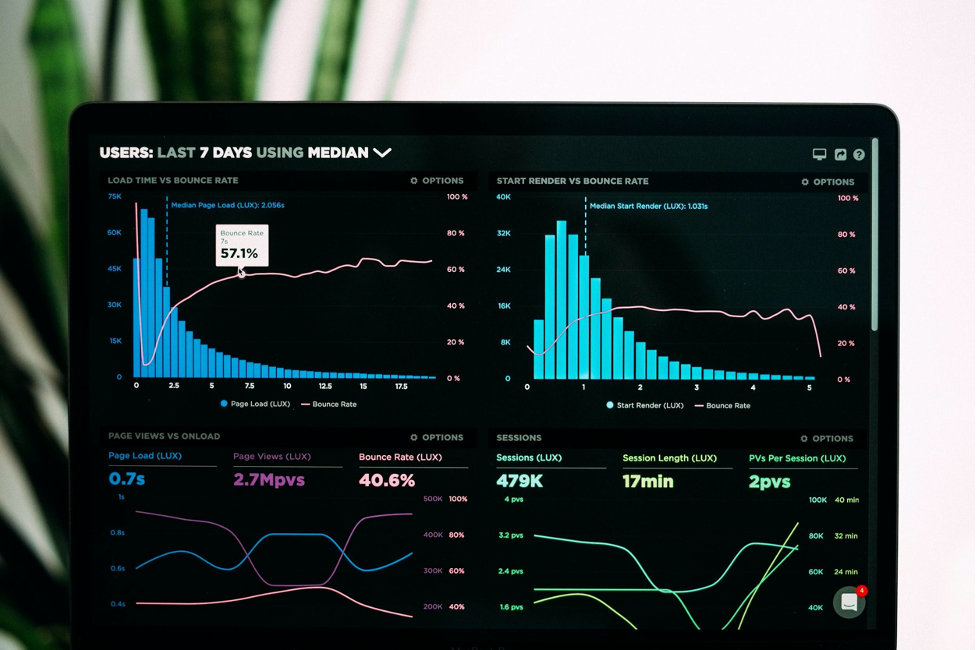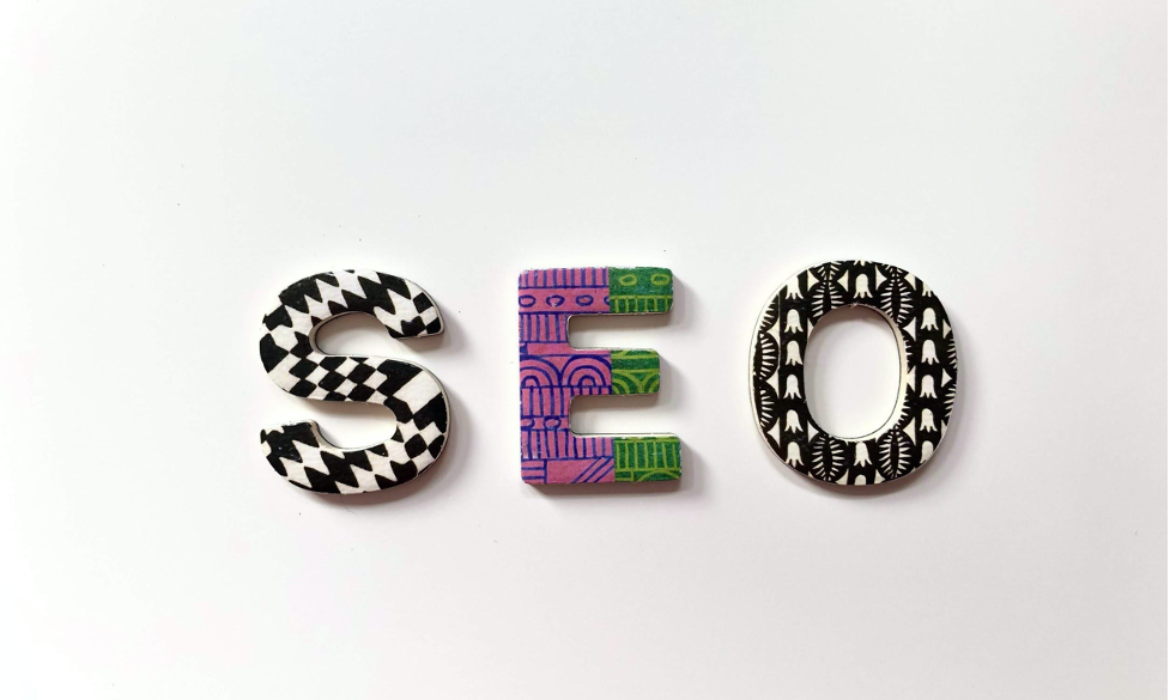How to start optimizing your website for SEO and conversion
Website optimization is the process of optimizing your website for specific keywords to place it higher in search results like Google.
When you learn how to create a website, consequently you should start optimizing your website.
To optimize your website, the first two steps of your SEO include;
- Researching on the various search queries-based keywords
- Practicing basic SEO strategies (On-page and off-page SEO)
Know this: Website optimization is what we use to place our site well in organic search.
The tasks associated with SEO optimization or website optimization include the creation of;
In addition to the steps mentioned here, you have to adopt an SEO to-do list to direct traffic to your website once it is optimized.
Follow this SEO to-do list to optimize your website;
- SEO for your websites,
- Adapting your website to a target audience,
- Post quality content,
- Improving page speed, and
- Optimizing mobile use of the website.
However, if you follow these simple SEO tips, it does help you to optimize the site to rank higher.

How do I start SEO for my website?
To fully optimize your site for natural SEO, identify and test relevant keyword targets to see which keywords are most successful in terms of;
- Conversion rate,
- Website optimization for SEO, and
- ROI
Keyword research is not only a great and relatively easy step to optimize a website. It is also a valuable tool to discover new content ideas that will increase your overall SEO value.
Pro-Tip: Ubersuggest lets you find out which websites currently rank for each keyword and discover new keywords and content ideas to boost your overall score on SEO.

How do I optimize SEO for my website?
The relationship between website design and SEO has tangible effects on website optimization. You can refer back to the SEO to-do list to get started optimizing your website.
This can be used as a multi-step approach and help you gain a better position in search engines. As a result, you can achieve increased revenue generation.
Bonus post: The incredible evolution of SEO over the last 10 years.

How do I optimize the website for Conversion?
Optimizing the conversion rate of a website gives you a real picture of the state of your website.
Although the optimization of the conversion rate is not directly related to the attractiveness of organic websites or the ranking on search engine results (SERP) pages.
To improve conversion rates, it is critical to take proactive steps to improve the SEO of your websites.
When you are working on improving your website’s SEO, you should analyze the data to look for patterns that can help you identify where the site is successful or not.
This can be done by using;
- Internal links on your websites, which increases views to the site
- Blog posts with proper CTA’s which prompt the users to try your product
- Landing pages with detailed information about your brand can generate leads.
You can improve the number of pages that are searched and the conversion rates by implementing these features.
Relevant post: What are the different types of SEO and How to use them?

The Bottom Line
To be successful in SEO, you want to optimize every page of your website for every type of keyword. If you write content in long-form that should ideally include these keywords.
And if you have a good grasp of the above techniques, then this will be a hassle-free task to optimize SEO for websites.
Pro-Tip: Use as many keywords to strengthen your SEO websites and gain credibility.
Properly executed website optimization not only makes it easier to find websites for your SEO strategy. But also makes it easier for visitors to learn about your products and trust your brand.
Alert: If you don’t take the right steps to ensure that your site is SEO-friendly, then you’ll miss out on the crucial organic search.
How SEO Can Be Leveraged by an Organization?
Many organizations struggle in the nuances to publish the data in a search-engine-friendly way to leverage SEO for business growth.
Search engine optimization is a set of practices that help your website gain more visibility for your business on search engine results pages (SERPs). When it comes to classifying one website against another, Google focuses on the quality content and overall structure of the site.
A user-friendly website is about more than just search engine rankings.
At the same time, the following are the ways that any Organization should practice for SEO leverage of their business
- Content Marketing,
- Competitor’s site analysis,
- Gain quality backlinks
- Keyword analysis and optimization
- Page optimization of your website.
All these factors play a role and contribute to the overall user experience of the website and promote SEO leverage.

Content Marketing
When people visit your site, you need to know how to deal with them and give them what they’re looking for. The purpose of content marketing should work in conjunction with your business. Likewise, you can build real trust with your visitors.
That is to say, through careful analysis, you can take your content game to the next level. Your SEO data is the key to creating a successful content marketing strategy. By using this data, you will identify gaps in your content strategy and develop new content ideas.
Relevant post: Is interactive content a part of your marketing strategy?

Competitors site analysis for SEO leverage
Above all, the best way to SEO a site is to check your competitor sites. Take advantage of what your competitors are doing and do better. Similarly, there are a few elements that Google uses to determine which local listings are displayed in search results. So, spend some quality time analyzing their website and identify the keyword they are ranking for.
Make sure to check the feedbacks and reviews on Google My Business listings and third-party review sites such as Twitter, Facebook, and others.

Gain quality backlinks as a part of SEO leverage
An effective SEO strategy for building website authority is to get as many backlinks as possible to your website. For this to work, your website must have informative, useful, and original content linked by other organizations. When this happens, it sends a positive signal to search engines like Google, which leads to a higher ranking for your site.
Firstly, sharing your content on social media platforms helps to create a backlink profile for your content. Secondly, that will increase traffic and search engine rankings.
Regardless of how you use backlink sources, you must find authoritative websites that present your content.
Relevant post: Explore more about social media marketing strategy
Pro-Tip: The best way to gain backlinks is by guest posting on niche blogs and websites with an audience that already follows your industry.

Keyword Analysis for SEO leverage
Keyword research and selecting the right keywords should be a fundamental aspect of an Organization for SEO leverage. As it provides a roadmap that you can use to optimize existing content and produce new content. And that helps to rank higher in the SERPs. It requires an understanding of your target audience and what they are looking for in terms of content.
Also, you have to understand the user’s search intentions for each keyword. All you have to do is google the keywords and check the top results in the SERPs.

Page optimization of your website
Page optimization is the process of optimizing certain pages on a website for the keywords you want to rank for. With Page SEO, you help Google determine;
- What your business is,
- How it is relevant to your site, and
- What people are looking for.
Know this: Optimization includes SEO ranking factors such as the content of the page and source code such as page titles and meta descriptions.
Bonus post: Learn about the evolution of SEO over the last 10 years

Conclusion
Google thinks about your company because of its reputation and branding. This reputation is determined by your ratings, the number of reviews, and the number of high-ranking websites that link to your site. Quantity of users, quality of reviews, quality of the content, and quantity of links, domain, and domain age, are just some of the methods by which Google determines trustworthiness.
The goal of SEO leverage is to create a strong foundation for your organization with a beautiful website, a clean and effective user experience, and a searchable inquiry. High-quality SEO and a high-quality website will take your brand far. A visible and trustworthy resource from Google and other search engines will work in favor of the brand.
Why SEO Takes Time ? Secrets Exposed For Its Long-Term Process
In this blog, we are going to discuss the most frequently asked question about the long-term process of SEO.
Why SEO takes time?
Yes! It does take time because it helps you to grow your traffic organically without any paid strategies. For a fact that organic traffic keeps your business stay active in the long run.
So it’s worth the wait!
You need to spend a decent amount of time working on your SEO strategy, and I promise you it will pay off.
Relevant post: SEO vs. SEM: Which one should you adopt and why?
Why SEO is a long-term process?
SEO is a long-term process because of its potential to create long-term results. Certainly, the research part of SEO is not an instant process as it has to;
- Explore your market,
- Work on your industry,
- Gather data on your competitors,
- Perform the necessary analysis and
- Produce SEO-optimized content.
Preparing an SEO strategy to earn top visibility in your search is a perpetual process. And the reason why SEO takes time.
Google and other search engines want to display the best results for a particular search query. Therefore, it takes time to create SEO-optimized content to earn the top spot. (Quote)
Know this: For SEO success, you want to achieve long-term results. Your website should perform well and have a consistent ranking.

How long does SEO take to show results?
Your website may achieve amazing results in four months or six months if there is a medium competition for your business. For the high competition, it might even take ten to twelve months to show the results. It all depends on the variables of your website. These variables affect the length of time that it takes to see the results of your SEO campaign.
Bonus post: A-R-R approach: The secret sauce of success for branding
Pro-Tip: A huge aspect to bear in mind is that there are thousands, millions, and even billions of websites offering the same thing that you do. So be an out-of-the-box thinker!
The time it takes to see significant results depends on variables like;
- The age and authority of your site,
- Penalties that hamper your rankings, and
- Whether you seek long-term or short-term results.
As you have noted, several factors can affect your SEO results, for better or for worse. Google distrusts websites with sudden ranking increases, and it is believed that malicious advertising is not encouraged.

What are the factors that Google considers for ranking purposes?
Regardless of what stage of your business, your site is bound to have several factors that Google’s eyes could use. These include;
- Keyword targeting in your titles and content,
- Restructuring the format of your pages, and
- Extending your links and profiles, etc.
If you are a brand new website, it will take a while for Google to trust you. All elements on your websites are factors that Google takes into account. This is also a reason why SEO takes time.
Bonus post: A Brief History Of SEO: Every Marketer Should Know

Conclusion
Meanwhile, a major factor in why SEO takes time is what your competition does. Moreover, don’t ignore the fact that your competitors are also working on SEO.
Above all, it takes you a while to discover the things on your website that have changed. Besides, Google takes time to recognize your site and give it the authority it deserves. It also takes some time for them to see the changes made and compare the quality of your website with your content in the same space. And it takes even longer for user behavior to change.
In other words, ensuring that your site pops up when people search for your topic is not a one-off process. SEO is just another ingredient you need to work on your content to achieve that.
Why SEO Matters In 2020? Here are the Juicy Details
SEO for business is an essential part of any successful digital marketing effort. And it played a quintessential role in 2020 during the pandemic.
The year 2020 has made us realize how important it is to have a digital business, website, and an active online presence.
Relevant: Why every business needs a digital presence in the pandemic situation?
Think of the last time you used the Internet. I can bet that it happened via a search engine. Considering that they are the primary method that most people use to find information about a website, it is important to list their results correctly.
We realized the difference between attracting tons of website traffic and getting lost in the billions of other websites on the Internet. It was a good chance to use SEO for business growth.
Know this: Google processes over 40,000 searches per second (3.5 billion searches per day) and there is a good chance that one or two of these searches are related to the products and services that your company offers.

Why SEO matters in 2020?
Although SEO was still important in 2020, several methods and practices have changed over the years. For example, an update to Google’s 2019 BERT SEO experts forced them to focus on optimizing their content based on users’ search intentions and not on standard keywords. Businesses need to focus more on SEO because they need to adapt to the changing landscape.
Here are some reasons why SEO is important for your brand in 2020.
- Great SEO generates built-in links to your website,
- Promotes brand awareness and
- Generate qualified traffic to your website.
This not only improves your short-term Google and Bing search engine ranking but also takes care of your business in the long run. Brand-driven SEO is more powerful than ever.

Why SEO is important for business growth?
To be successful with SEO for business growth, you have to commit to your SEO strategy and follow it through to completion. If you implement SEO correctly, your website will end up at the top of the SERP and the results will benefit your business for years to come.
Plan your SEO strategy around establishing your website and your company as a reputable brand. However, if you want to be ahead of your competitors in the long term, you should focus on branding strategy. This increases your brand search and gets more people to search for you on Google.
Either way, organic traffic is indispensable to any business. To increase organic traffic, you want to optimize for the major search engines like Google. By ranking for target keywords, you increase the organic traffic that goes into conversions and engagement.
Know this: You need to make sure Google has access to the best content on your site and make sure it has a better interface than your competitors. This can be done using Schema.org.

What is Schema in SEO?
Schema.org are the vocabulary tags that we can add using HTML to improve the search engine’s readability. The scheme helps Google understand the content of your websites. Schema helps you take advantage of SERP features such as Featured Snippets, Knowledge Graph and Voice Search. It’s not a ranking factor, but it plays an important role in your SEO success.
Bonus post: A to Z guide to WordPress plugins

Conclusion:
Ultimately, it is the customer experience that needs to be taken into account when optimizing content and SEO. If you make sure your website content is relevant to your target audience, you will recognize authority in a world of voice commands. It will help them to achieve the best possible result every time they search for the information they need.
When you implement the right strategy of SEO for business, you do more than just tailor content to Google.
They also create
- Brand awareness,
- Improve the usability of your website and
- Create the best possible information for your target audience.
You’re not creating Google, you’re creating your audience and how they get the result they want. (Quote)
SEO for business requires an upfront investment in resources, but search engine rankings are earned in the long run. Search engines value and reward content that is relevant to the reader, rather than being written for them by a bot. SEO traffic is a medium-cost factor but offers a significant ROI that is important for your business.
What Is SEO And How To Use It – A Comprehensive Guide For SEO Beginners
The biggest challenge for today’s SEO beginners is execution, not know-how. If you are new to search engine optimization or need assistance with SEO basics, you may find this post useful.
Keeping up with competitors may sound a lot harder than it is, but most SEO beginners are confused to look at competitors’ data. Investing in the right competitive analytics tools is the best first step you can take to improve your SEO strategy.

How to explain SEO for beginners?
Search engine optimization is the process of optimizing a website to rank higher on Google’s SERP.
There are two different levels to help SEO beginners understand the process;
- Macro-level
- Micro-level
Relevant: What Are The Different Types Of SEO And How To Use Them
While the macro-level includes technical aspects such as website architecture, design, UX optimization, and website internationalization.
The micro-level includes focused content and page optimization such as intention matching and content optimization.
Pro-Tip: If you are an SEO beginner, much of your SEO efforts should be spent on content testing.

Where to start SEO?
When creating websites, your website should serve a clear purpose for your users. Each update should add value to the Web. And the website should provide useful content that users cannot find anywhere else on the Internet.
Before we get into the technical aspects of SEO, we should take a look at what people call page SEO analysis.
Page SEO is the process of promoting your site without having to work on it. Although SEO elements are good at informing search engines about your website. But, they do not rank websites at position one, the holy grail of SEO. The implementation of page elements on your website is not enough to guarantee a ranking
Pro-Tip: You can use Ahref’s Site Explorer to keep track of your organic traffic, the number of keywords your site represents, the organic position of your site for different keywords, and more.

What is an SEO audit?
An SEO audit is a complex process. It means analyzing several aspects of your business based on how they help you understand what is good and what you can improve.
Many things can be improved during an audit. They are;
- You can gain insight into your competition,
- Analyze your keywords and
- Improve the technical aspects of the website.
Why SEO audit is important?
If you are serious about your digital business, you should make sure that you perform an SEO audit. It is a mandatory and yet a standard procedure. Performing an SEO audit gives you a better insight into your website, individual pages, and overall traffic.
In contrast to a traditional audit, SEO audits are usually conducted for marketing purposes.

How important is SEO for small businesses?
It is important to consider the thoughts, feelings, and assumptions of your target audience before you market it. Choosing a keyword or feature in the title of your content, so that search engine crawlers know exactly what you are writing. As a result, it improves your chances of ranking searches.
For many small businesses and start-ups, all you need to know about SEO is to
- Properly understand the technical aspects of SEO,
- Understand the keywords you want to address, and
- Have a strategy for linking and sharing your pages.
Once you get this down, you will know a lot of information about how search engines rate websites and how you can position the website for business to generate more search traffic for search engines like Google.
Know this: No site can perfectly execute every single aspect of search engine optimization. There are specific cases and business types that have to deal with certain types of searches.
Bonus post: 8 ways realtors use digital marketing to boost sales
Conclusion
In the late 1990s and early 2000s, SEO was easy for companies to manipulate. Just put your keywords on your website and you would get traffic. But for end-users, it provided search results that were inconsistent in quality. New search engines arrived and that changed everything.
SEO requirements also change with the development of website content. Search engines are constantly changing the way their algorithms work, which means that you can never have a perfect SEO solution.
Although basic SEO is still the most efficient way to create links and drive search engine rankings. There has been a change in recent years as content marketing has become more important. And many people think that it works greater than traditional SEO and valuable in generating traffic for search engines.
How Are Website Design And SEO Linked? – Understanding The Correlation
It may seem obvious, but it is wise to make sure that each new website complies with basic SEO web design practices.
If you make sure that it is easy for search engines to understand the changes you are making on;
- The domain,
- Page structure, and
- Links
You increase the chances that you will make it through the transition without being deleted from search results.
The most important thing is that search engines are an important part of the target audience for your new SEO web design.
Relevant post: Everything you need to know about SEO tools
This blog helps you understand the process of SEO when;
- Changing or registering a domain name,
- Building a website, and
- Redesigning a website.
How to perform SEO when changing/registering a domain name?
The quantity and quality of links and domains on a website will make difference from a website registration perspective. Also, it can give you an idea of how much effort is needed to stay ahead of the times in the competition.
Internal links give you a way to show search engines that your pages are interconnected. They direct traffic from one site to another.
Look at the title and description labels and make sure to optimize them for search engine crawling. When you make changes to your websites, such as adding content or overhauling navigation, make sure that your title tag and meta description using keywords.
Know this: Screaming Frog SEO Spider is a website crawler that analyzes, reviews, and evaluates your website from an SEO perspective.
Bonus post: 7 content pieces to consider when marketing pre-built homes
How to build a new SEO web design?
For SEO purposes, customize the URLs for a new website based on the keywords you want to classify them for. When you write custom URLs for each page, you want to create a large, SEO-friendly URL structure and a name for each URL on your site.
From the moment you register your website and domain name, you need to be vigilant about how you approach the work on your website, including the content you post, the SEO tactics you use, and how you approach website maintenance.
Pro-Tip: In the first year, you set the tone for the life of your website.
How to perform SEO when redesigning a website?
Changing the information architecture, sitemap and entire content plan during a redesign is key to SEO.
Redirecting from the old URL to the new one should be the first job on your list. Whenever possible, revise the website and keep the content in the same URL.
For example, the WordPress redesign could maintain the same permalink structure.
Bonus post: 8 killer steps to free WordPress website
Make sure that you redirect all the content you have on the old website, whether it is images, videos, PDFs, JS files, etc. Do not forget to delete the page. If you delete an irrelevant page on the older page, you should redirect it to the page’s relevant content so that you do not lose the backlinks and traffic you gained from the old page.
In this way, search engines know that the new page has the same or similar content, and it is safe to assign it to the same rank. However, it is an extension of the page you are modifying.
Know this: SEO web designs (redesigns) are no walk in the park, and they can become an SEO disaster if you don’t get it right. Any changes you make to your website during a redesign can result in traffic loss and make your current website not search engine friendly.

Conclusion:
The goal is to improve your SEO web design and perform SEO with your new website.
If you have ever run an SEO campaign, you have a good idea of how to work with keywords and topics to organize pages and bring in organic traffic.
Before you redesign or migrate, you need to browse your site, collect metadata from the URLs, and identify the necessary customizations.
Through this analysis, you will know what works best, and the same intelligence will feed into the website’s thinking process. There are many reasons why a website should be redesigned, but they have as much to do with branding and technology as with traffic and lead generation.
What Are The Different Types Of SEO And How To Use Them
There are different types of SEO services that focus on different elements of search engine optimization, blogging and online visibility. To better position search engines such as Google and Bing, one should adopt various types of SEO services in the site.
Similarly, websites that are more popular tend to rank higher on Google than sites that are less popular.
That is to say, the popularity of a website also depends on the types of SEO focused on;
- Website infrastructure and
- Content
In this blog, we are going to discuss;
- What are the different types of SEO?
- What are the functions of SEO types and How to use them?
- Which SEO is best for the long run?

What are the different types of SEO?
There are 7 types of SEO we come across while dealing with SEO. They include;
- On-page SEO,
- Off-page SEO,
- Technical SEO,
- White Hat SEO,
- Black Hat SEO,
- Content SEO, and
- Negative SEO.
These SEO types have their own unique features in optimizing a website to rank higher on Google.
Relevant: What tools do you need for SEO – Everything You Need To Know

What are the functions of types of SEO and How to use them?
Now we understood the different types of SEO, let’s look into the functions and uses them.
Technical SEO involves optimizing the backend so that your website runs smoothly and increases your ranking. It largely helps Google bots search, interpret, and index pages on your website for future use.
On-Page SEO involves;
- Creating high-quality content for the sole purpose of making it useful to your website visitors,
- Adding meta-tags to help Google bots understand your content,
- Using HTML tags to highlight headlines and other content, and
- Ensuring that there are no broken links or duplicate content on the page.
Off-page SEO is a technique you can use to promote your website on the Internet. They include social networking, backlinks (link building), and guest posting. And, they focus on organic SEO and local SEO services.
Bonus post: Conquer your fear of Social Media Marketing strategy
White Hat SEO techniques are tactics that Google recommends to help your site achieve a higher ranking in results. In other words, they adhere to Google’s search engine guidelines, therefore it leads to positive results for your business.

Black Hat SEO is a term that describes measures that are taken to trick search engine algorithms. Moreover, some people see Black Hat SEO as a different kind of SEO. Subsequently, it can create confusion, especially for beginners.
Know this: In 2006, BMW was banned from using search results for the use of front door pages. Doorway pages are a black hat technique that reuses the same content with only minor changes to the game for search engines to attract customers.
Content SEO is all about the quality of content and what makes it better. Most importantly, publishing great content that users love and that search engines understand is a winning combination.
Know this: Interactive and Quality content is the important factor for SEO success, which is why it is seen by many as a type of SEO.
Negative SEO practices focus on;
- Building unnatural or undesirable links to a competing website,
- Stealing its content,
- Publishing negative reviews,
- Hacking its website, and
- Altering its content.

Which type of SEO is best for the long run?
White Hat SEO is the best type of SEO because they are a reliable way to improve and optimize your SEO ranking over time. In the same vein, it refers to optimization techniques that adhere to Google search engine guidelines.
It includes all the organic methods of optimization. For example, using appropriate;
- Target keywords,
- Title tags,
- Quality content,
- Site speed,
- Easy website navigation, etc.
Above all, these qualities let Google know about the user-friendliness of your website. Consequently, your website becomes a search engine’s favorite to crawl. So when you become Google’s dear friend, there is nobody who can stop you from ranking high.
Know this: White Hat SEO is also called Ethical SEO.
Bonus post: About Keywords: Everything you need to know – Part 1

Conclusion
Firstly, these are not the only things you can do on your site to optimize it. In addition, you should also consider external factors (Domain name, age, authority, etc) that can affect your rankings.
In short, these different types of SEO help to strengthen and influence the relationship between your website and SEO. This includes strategies to build up a good reputation and authority.
One more reason to use the different types of SEO to optimize your site is that Google recognizes that your content is valuable and will showcase it.
What Is The Relationship Between SEO And Website Design
What people don’t realize is that the correlation between SEO and Website design can have a huge impact on your content.
SEO is a crucial design concept for your website. For high-quality content and the right link building to deliver good results, web design must do SEO justice.
If your website design and SEO are in the right place, websites will be ranked higher for sure. Consequently, it attracts more users to your business.

What are the benefits of SEO-friendly website design?
The benefits of an SEO-friendly website design results when your SEO team and your web development team work together.
It is no secret that mobile compatibility, including fast loading times, structure, and readability on mobile devices, is of paramount importance.
When putting together your customer site, there are two important things to consider:
- Consumers and
- Search engines.
Relevant post: A brief history of SEO: Every Marketer should know
They need a creative, user-friendly, and well-designed website to help consumers find what they want to buy. You also need an SEO-friendly website optimized for search engines so that you appear on Google when consumers search for your products.
Know this: The conflict for the operator of a website with hundreds of available products becomes a balance between a user-friendly website and SEO-friendly content.

What makes a bad website design/poor web design?
Poor web design can make it impossible for users to read what they find on your site.
Poor website design might;
- Have pages that block content in strange places, or
- Have too many hyperlinks that do not serve a clear purpose, and
- Lose the audience you could bring to your site.
Pro-Tip: The more you work on improving your SEO and Website design, the more traffic your website is going to gain.

What are the criteria that web designers should follow to create a good website?
Now that you understand the link between website design and SEO, let’s take a look at some of the specific aspects of your website that influence SEO and how you can optimize it with web design. The basic design elements on your website are of course determined by your designer. Designers have very few options when it comes to the code they use to represent the most important design elements of the website.
Relevant post: Why should you hire an SEO specialist?
To provide your visitors with the information they need to become a customer, your website needs to be
- Functional and
- Visually appealing –
These two qualities that only the best designers can achieve. They can influence how people pay attention to your website.
As a web designer, you understand that creating a website that makes it easy for users to include your content makes the most of your money.
Know this: The speed of the site is one of the most important aspects of technical SEO, and it is also the main shortcoming of many sites. It has to be taken care of during the web development stage itself to rank higher.
SEO and website design depend on each other to optimize the effectiveness of a website and improve its online visibility.

How can I make my website SEO-friendly?
When considering best practices in website navigation, you must focus on solving the following two problems.
- The website navigation should be made easy and
- Optimize for search engines without compromising the user experience.
Few people believe that SEO is related only to the content, keywords, and domain names, but not to the website itself. They do not see the site as more than a vehicle for accessing the terms and information they are looking for.
Pro-Tip: Hire a strong web development team that struggles to simplify the visual and user aspects of the site.
Bonus post: Meet the incredible strategies of Digital marketing

Conclusion:
In short, SEO should be an integral part of your website design and redesign process. Website design and SEO are two sides of the same coin.
Your SEO team takes care of the marketing, content, and production side of things; while your web design team works on the backend of the application like code structuring and other key elements. SEO specialists and website developers have two different workplace needs. But both work toward the common goal of increasing their customers’ web traffic and ROI.
So, the best way to achieve this goal is for them to work together and, so to speak, to be on the same page.
How To Perform SEO On WordPress Without Plugins
Today we will share with you how to perform WordPress SEO without plugins. We will talk about coding and the technical side of SEO, which is a high bar.
You can learn how to optimize your WordPress blog for SEO (Search Engine Optimization) without using its plugins.
Know this: The use of too many WordPress SEO plugins can slow down the loading speed of the site.
Let’s dive into the section which discusses WordPress SEO with plugins and WordPress SEO without plugins.
- Why WordPress SEO is the most popular CMS?
- How useful SEO plugins are?
- How to tackle the technical issues and limitations of SEO plugins?
- Can we make our website SEO-friendly without coding?
- How to perform SEO without plugins?

Why WordPress SEO is the most popular CMS?
WordPress is the most popular CMS on the planet for good reasons. Because it is;
- Easy to use,
- Flexible, and
- Provides a good basis for SEO.
However, WordPress is not optimized by default. You need to install a few plugins and themes by yourself.
Pro-Tip: Customize the themes and page builders with a few tweaks to make the most of it.

How useful WordPress SEO plugins are?
Installing SEO plugins is more useful for WordPress websites as well as web developers. Because they are easy to use and do not require any tinkering.
You can add the following things easily within a single go using SEO plugins;
- SEO Title,
- Meta description
- Focus Keyphrase
- Secondary Keywords,
- Permalink
- Slug
SEO plugins do help those who are;
- Beginners to WordPress site
- Not having any coding knowledge

How to tackle technical issues and limitations of SEO plugins?
There are some features in SEO plugins that are redundant and not necessary. In short, you don’t need an SEO plugin to handle them.
For instance, if you have a text editor or HTML editor with you, you only need to edit one file and update the .htaccess file. The result will be the same as that of SEO plugins.
By doing this, you will become versed in editing files, so you do not need a WordPress plugin that can handle these features.
Bonus post: 7 steps to build a real estate building website on Wix

Can we make our website SEO-friendly without coding?
Things are easier to program regardless of your knowledge of coding. Many of the plugins on the market are SEO plugins that add a ton of features that are easy to program yourself. Consequently, if you want to perform SEO without coding, you can program it and not worry about it.
Know this: No programming experience is required to figure out HTML and PHP for things to work.
Bonus post: How SEO Can Be Leveraged by an Organization?

How to perform WordPress SEO without plugins?
There are innumerable ways to perform SEO without plugins on a WordPress site. But now, we are going to discuss the two most important ways;
- Schema markup and
- Semantic markup
Schema is a short data snippet that provides additional information to users and search engines. Schema markup does not require programming skills and can be inserted via schema.org, a rare collaboration between Google, Yahoo, and Bing.
Similarly, Semantic markup is an HTML tag that helps highlight important information on your website. Semantic markup tells Google and the spider that the page must digest every word on the page. It helps Google understand what your website is all about, and it is also technically correct.
You can create your scheme in code and copy and paste it on your website. Then use the tool to check how the implementation works.
Bonus post: Significance of keywords

The Bottom line:
If you are an advanced user who likes to build things and want to keep control of your website, there is no reason to install such plugins on your website. You can make use of other WordPress SEO features like Schema, Semantic markup tool, title tag, easy WP meta description tools, etc. to optimize your site.
On the other hand, if you feel using SEO plugins increase a load of bloated features on your site. You can certainly optimize your website to perform WordPress SEO without plugins by making use of the above-mentioned tools. As a result, it increases user experiences and helps you rank.
What tools do you need for SEO – Everything You Need To Know
Analysis of websites using SEO tools is a significant part of search engine optimization. Being said, nothing is measured and nothing is improved without 100% correct SEO.
Compiling a list of SEO tools can be a daunting task. My goal here is to grab those we find most valuable in terms of SEO. Similarly, on the other hand, buffer those which we can use every minute on the internet to gain amazing insights.
Pro-Tip: The important part of setting up your SEO strategy is figuring out how you will track your performance using SEO tools.
Relevant: Why SEO Takes Time? Secrets Exposed For Its Long-Term Process
I try to keep everything as jargon-free as possible without insisting on the ability to act. It has to be simple, or at least the basics.
In the first part, to help you understand the basics,

We cover the three most important SEO tools for websites:
- Google Search Console,
- Google Analytics, and
- Rank Tracking Tools.
Google Search Console provides tools to help you submit your content to Google and monitor what you do with Google Search. Meanwhile, it can also send you notifications for any critical issues that Google has with your site.
Google Analytics is used to monitor website metrics. They include reports on;
- Real-time
- Audience
- Acquisition
- Behavior
- Conversions
Rank tracking tools, as the name it helps to trace the ranking of the website in SERP. The most popular rank tracking tools are;
- Rank Tracker,
- Position Tracking Tool from SEMrush,
- Rank Tracker by Ahref’s, and
- SERP Watcher by Mangools.
Add-on: Another nice feature of the SEO tools is the SERP Preview. This tool shows a preview of how your site will appear in search results. You can see how your titles and meta descriptions are optimized. Subsequently, you will get to know how to make changes if needed.
Successful SEO is not about tricking Google. It’s about PARTNERING with Google to provide the best search results for Google’s users.” – Phil Frost, Main Street ROI
And also, with tools like Moz, SEO becomes a guessing game. We compare your website traffic and optimization with your competitors. We can see which sites and search terms (keywords) do well with their competitors and change our web practices to compete with them.

What is SEO without Coding?
Search engine optimization (SEO) is crucial these days. New trends such as the rise of language search and the machine learning revolution mean that you need to improve your SEO game if you want to be ahead today.
Playing SEO games doesn’t truly mean SEO without coding will not give you results. Coding is just a bonus point when you play with SEO. SEO does work fine even without coding.
Relevant: How To Perform SEO On WordPress Without Plugins

Does SEO require Coding?
To be honest, NO!! One doesn’t necessarily need to be a Coder or should have coding knowledge to plan and execute an SEO strategy. But yes, an acquaintance of coding does add some value to the content. Otherwise, it’s completely fine to perform SEO without coding.

Conclusion:
In short, SEO (Search Engine Optimization) is the process of making your website better in search engines.
For example, imagine trying to build a table with your hands. You need tools such as saws, tape measure, drills, screwdrivers, to name just a few. Certainly, if you want to build websites, you have to come up with something else. And that something else is what we call ‘SEO Tools’.
Bonus post: What Are The Different Types Of SEO And How To Use Them
In the same vein, SEO has become an enormous discipline in the last 10 years, and the above-mentioned SEO tools would not exist without the SEO experts behind them.
However, check twice whether you are implementing the technical aspects of SEO tools correctly. Use these tools to see how your content is created.
Above all, this was just a basic introduction to SEO tools. You can learn detailed information in our upcoming blogs.
















